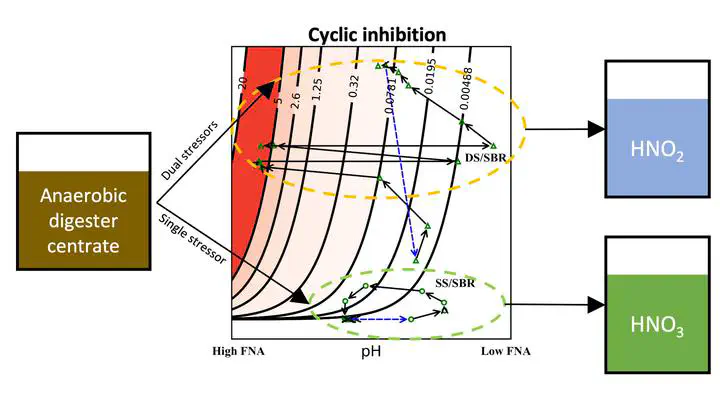Robust Nitritation of Anaerobic Digester Centrate Using Dual Stressors and Timed Alkali Additions

Abstract
Nitrogen is commonly removed from wastewater by nitrification to nitrate followed by nitrate reduction to N2. Shortcut N removal saves energy by limiting ammonia oxidation to nitrite, but nitrite accumulation can be unstable. We hypothesized that repeated short-term exposures of ammonia-oxidizing communities to free ammonia (FA) and free nitrous acid (FNA) would stabilize nitritation by selecting against nitrite-oxidizing bacteria (NOB). Accordingly, we evaluated ammonium oxidation of anaerobic digester centrate in two bench-scale sequencing batch reactors (SBRs), seeded with the same inoculum and operated identically but with differing pH-control strategies. A single stressor SBR (SS/SBR) using pH set-point control produced HNO3, while a dual stressor SBR (DS/SBR) using timed alkalinity addition (TAA) produced HNO2 (ammonium removal efficiency of 97 ± 2%; nitrite accumulation ratio of 98 ± 1%). The TAA protocol was developed during an adaptation period with continuous pH monitoring. After adaptation, automated TAA enabled stable nitritation without set-point control. In the SS/SBR, repeatedly exposing the community to FA (8-10 h/exposure, one exposure/cycle) selected for FA-tolerant ammonia-oxidizing bacteria (Nitrosomonas sp. NM107) and NOB (Nitrobacter sp.). In the DS/SBR, repeatedly exposing the community to FA (2-4 h/exposure, three exposures/cycle) and FNA (4-6 h/exposure, two exposures/cycle) selected for FA- and FNA-resistant AOB (Nitrosomonas IWT514) and against NOB, stabilizing nitritation.